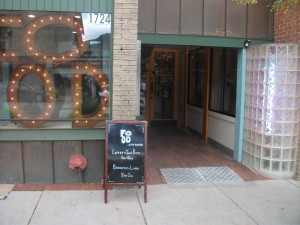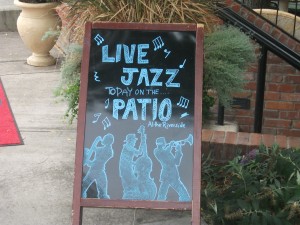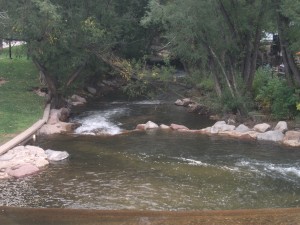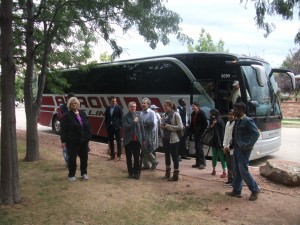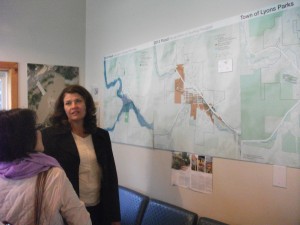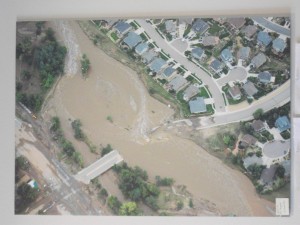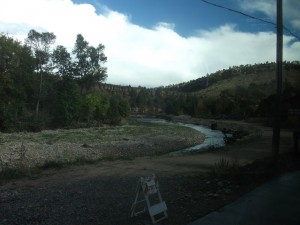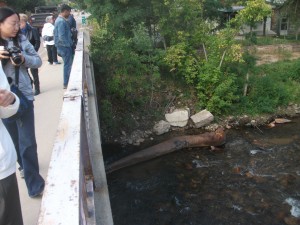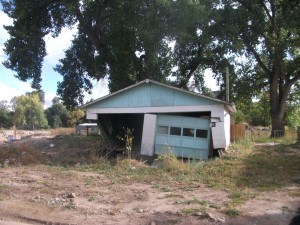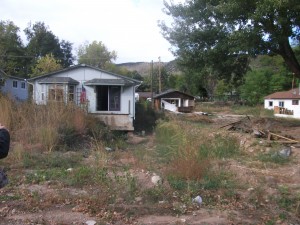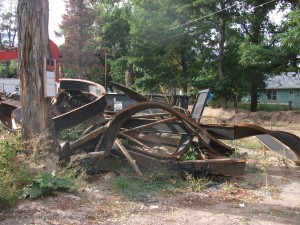This is the sin against the Holy Ghost: – To speak of bloody power as right divine,
And call on God to guard each vile chief’s house,
And for such chiefs, turn men to wolves and swine:-
To go forth killing in White Mercy’s name,
Making the trenches stink with spattered brains,
Tearing the nerves and arteries apart,
Sowing with flesh the unreaped golden plains.
In any Church’s name, to sack fair towns,
And turn each home into a screaming sty,
To make the little children fugitive,
And have their mothers for a quick death cry,-
This is the sin against the Holy Ghost:
This is the sin no purging can atone:-
To send forth rapine in the name of Christ:-
To set the face, and make the heart a stone.
Vachel Lindsay
Illinois poet Vachel Lindsay, one of the founders in 1915 of the Society of Midland Authors ,with which I have long been involved, penned this poem, “The Unpardonable Sin,” in the midst of World War I, as a screed against the presumption of those who would claim to be committing murder and mayhem on behalf of Almighty God. It has become a classic because it states the obvious so simply while confronting a tendency that has been all too prevalent in human history—the quest to justify one’s own cruelty in the name of God.
I doubt that this poem will have any influence on the leaders or followers of Islamic State, if they even are familiar with it. For starters, it is posed primarily as a challenge to Christians who would justify war in the name of Christ. Nonetheless, I would maintain that, despite its context amid a war that tore Europe apart, it has more universal meaning that condemns any attempt to justify war in the name of a deity, no matter the faith involved.
This is not the subject matter I have most typically addressed in this blog, but I was appalled, though not surprised, to read this week that Islamic State, in an English-language e-zine called Dabiq, actually stated in blunt terms that it has a right to enslave and sexually abuse captured Yazidi women whose husbands ISIS has killed or taken prisoner, on the grounds that “even cross-worshiping Christians for ages considered them devil worshipers and Satanists.” It goes on to note that the women were divided among Islamic State fighters, some of whom sold them into slavery. And all of this is supposedly endorsed by the Koran. One could go on with the grim details, but the fundamental picture seems obvious.
Once we have deemed another group of people subhuman because of their differences in belief, or race, or ethnicity, or whatever excuse we have, their feelings matter not a whit because Allah, or God, has given us permission to treat them as mere chattel or to kill them outright. In cases of what we now euphemistically call “ethnic cleansing,” God has supposedly given us permission to wipe them off the face of the earth.
The whole idea behind this makes many, if not most, of us recoil in moral revulsion, but we need to do more than that. We need to come to grips with the fundamental illogic that makes parts of the human race function in this way. There is an essential arrogance behind all this that cannot be ignored, nor can it be ascribed solely to one radical group or one religion. Christianity has too much to answer for in its own history to assume such a stance. It was only 150 years ago, as the Civil War was winding to a close, that many clergy in southern churches in the U.S. still found it possible to use Holy Scripture to justify slavery. Their “unpardonable sin,” in Vachel Lindsay’s phrasing, was to provide cover for an entire society that was racist to its core and used perverse religious logic in many cases to excuse unspeakable cruelty. There is a scene in the movie Twelve Years a Slave, based on the Simon Northup book in the 1850s, in which the sadistic slave owner to whom Northup has been sold stands in front of his slaves with a Bible and reads from Proverbs , “The servant who does not serve his master will suffer many lashes.” He proceeds to note, in a matter-of-fact tone of voice, that “many lashes may mean 40, or 100, or 150. This is holy scripture.” The fact that his slaves are not permitted to learn to read this scripture on their own to find the context from which their cruel owner has extracted this gem is more than ironic. It was a deliberate element of a system of subjugation.
So now we have ISIS resurrecting all the worst tendencies of every religion of every time in justifying the subjugation of other human beings, at a time when intelligent human beings have been hoping and praying that such notions have become a thing of the past. Sadly, that appears not yet to be the case; we have a long struggle ahead of us to expunge such logic from the human race once and for all. Too many people are still hanging on to too many prejudices and looking for justifications of one sort or another. And the most unpardonable of all, as Lindsay suggested, are those that justify their hatreds in the name of the Creator.
What lies at the core of this problem? I once heard Dr. Martin Marty, the theologian and long-time professor in the University of Chicago Divinity School, quote someone—I cannot remember whom—as stating that “a fanatic is someone who is determined to do for the Lord what the Lord would surely do for himself if only he were in full possession of the facts.” As absurd as that notion sounds on its face, it is all too real as human motivation. Somehow, we get it into our heads that a God whom Christians, Jews, and Muslims all describe as omnipotent, omniscient, and loving nonetheless needs the intervention of humans to solve problems that He has failed to perceive and remedy. And if this God is not taking care of business, well, then, it is up to us to do it for him. It is as if we are rushing to defend the honor of a helpless lady rather than worshiping a force far greater than ourselves. Here, God, let me help you by destroying these infidels.
Except that those “infidels,” however defined, are fellow human beings. And in order to get to the idea that these fellow human beings are lesser creatures who need to be slaughtered, enslaved, raped, or maimed, we have to cultivate the notion that the same God who created them and the entire universe somehow passionately hates a part of his creation so badly that he needs our help in getting rid of them.
I don’t care what passages out of the Bible, the Koran, or any other text some fanatic can extract or twist to construct this logic. If you believe in a deity who created the universe, that logic is an insult to the Almighty. And we need to grow up and accept the fact that it is all too easy to manipulate scriptural passages in isolation as justification for our own moral shortcomings. God does not hate the humans He created. He may very often be disappointed in their utter failure to achieve their own high moral potential, but what He does about that is his business, not ours. It is not our right to kill, injure, or enslave based on any differences among us.
There remains the problem of what to do about the people who insist on inflicting such injury on other people. When our own daughters were growing up, I did not endorse or employ corporal punishment because I do not think it is an appropriate remedy and certainly not the best. That said, I had no hesitation about using physical restraint to prevent them or their friends from doing harm to themselves or each other. I once gang-tackled one of our daughters in our living room to stop her from running away when she did not want to confront a serious issue in her life.
I think the same principle applies in both domestic and international situations where violence threatens to dominate people’s lives. Police are allowed to use force to prevent violence, for the same reason. None of this is because God wants us to hurt someone, but because there are times when we need to prevent such harm. The challenge in facing an insurgency like that led by Islamic State is that it inherently involves such complicated scenarios that may produce collateral damage. It is nearly impossible to find surgically sterile solutions; every option seems to leave blood on our hands. Even inaction, as President Barack Obama, like his predecessors, has learned on the job, can leave blood on our hands. There are few perfect solutions. But at least we can avoid the unpardonable sin of presuming that what we are doing is in the name of God. Far better to settle for the more humble proposition that, however imperfectly, we are simply seeking to reduce the level of pain in the world, and ideally to increase the volume of love and mutual respect. That is a goal that will ennoble any human being, no matter what faith he or she professes.
Jim Schwab

